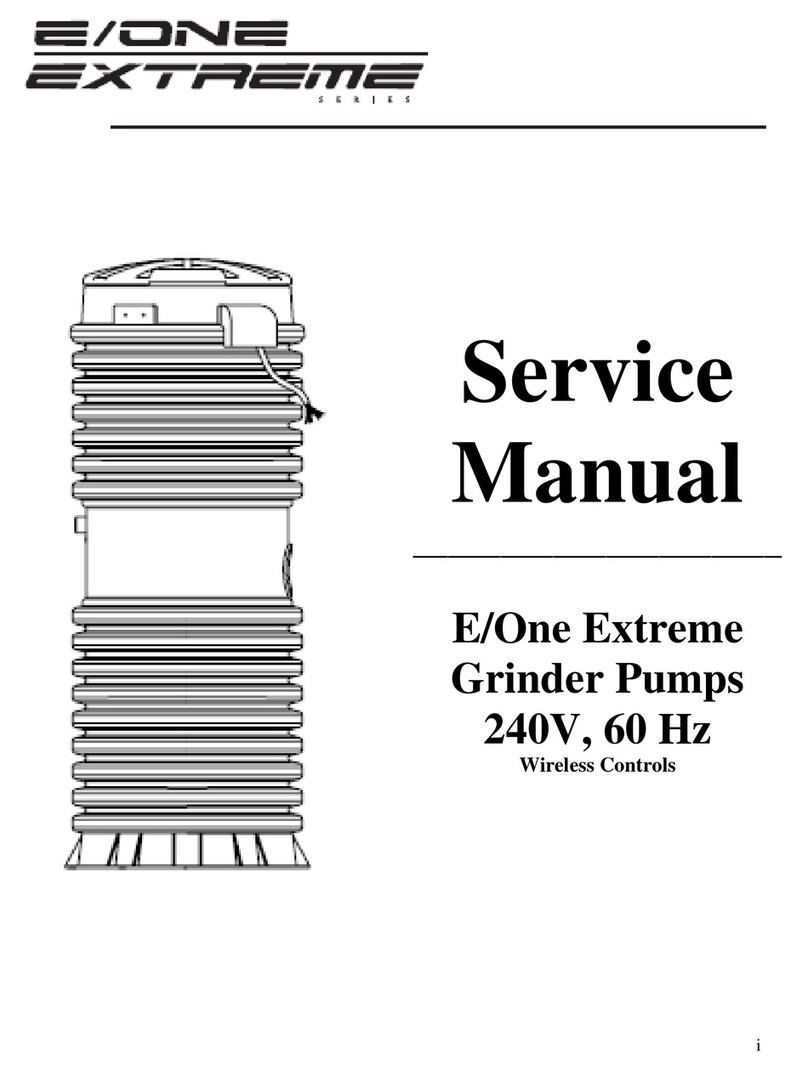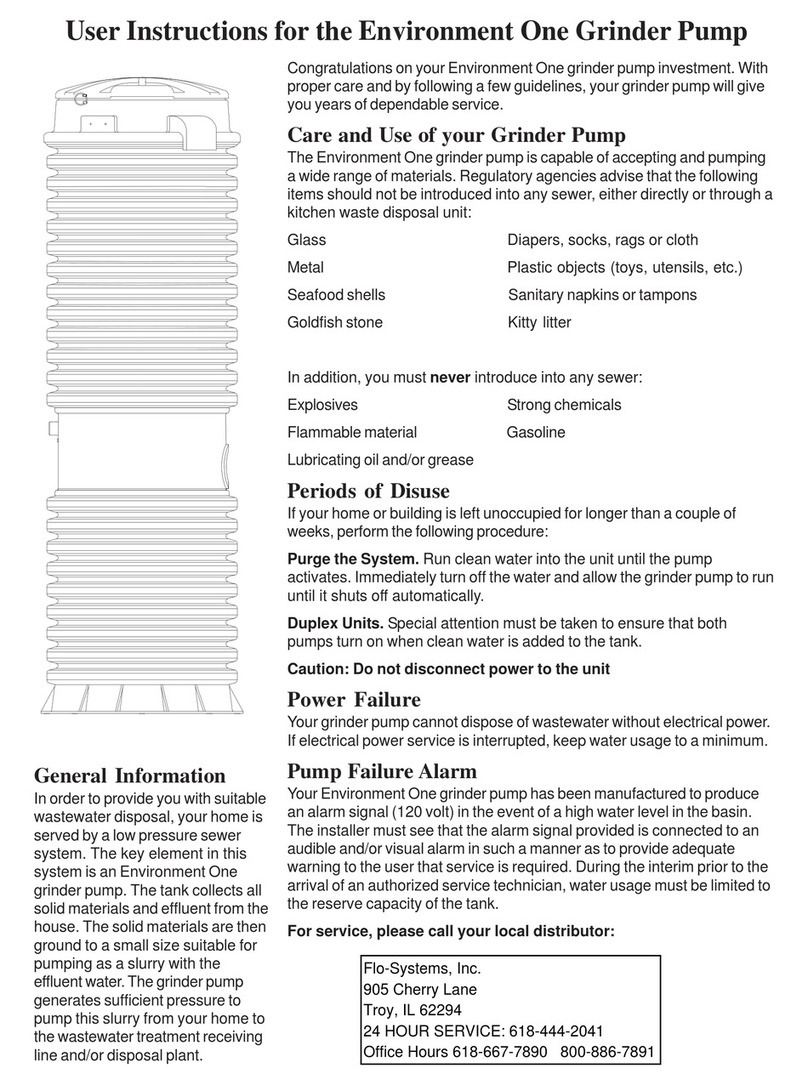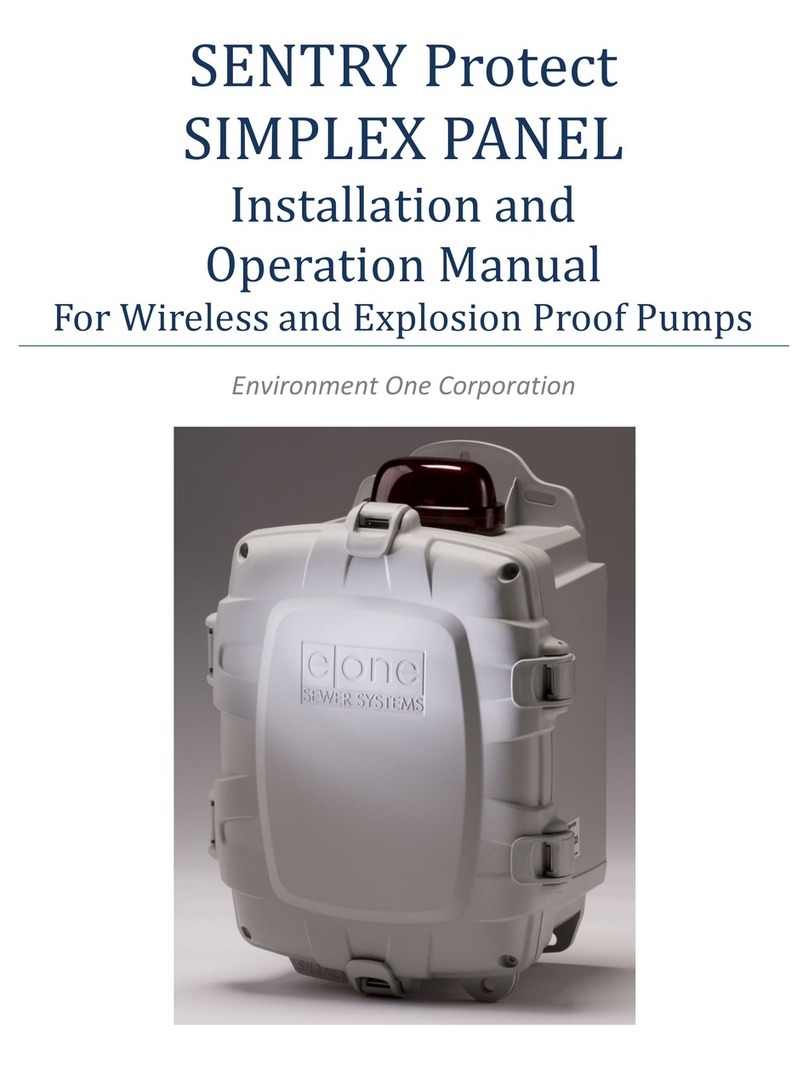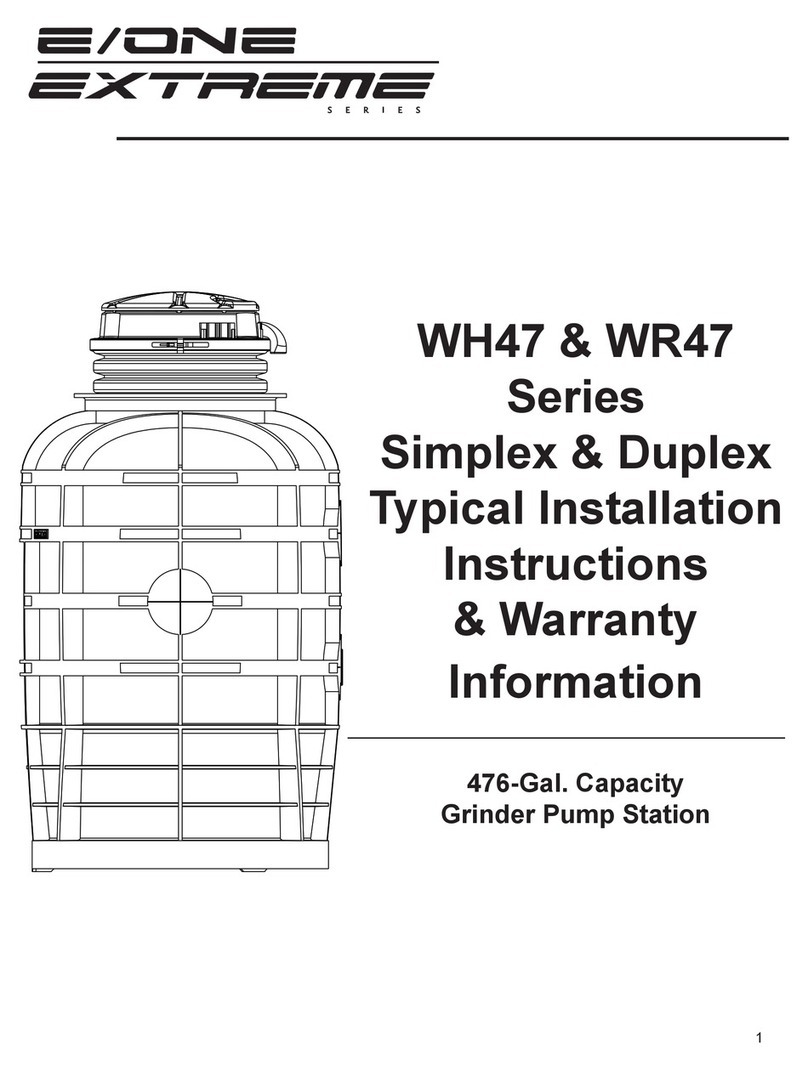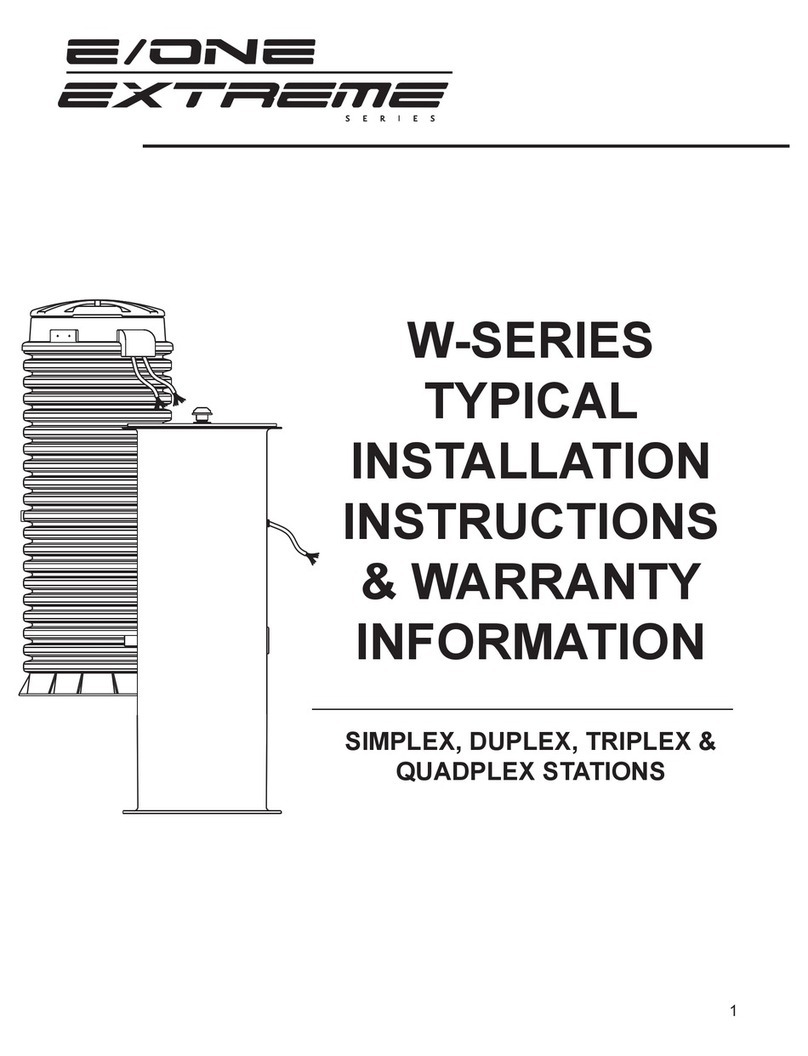
5
5. VENT INSTALLATION: The unit must be properly vented to ensure correct operation of the
pump. Standard WH101 stations are supplied with an integrated vent located in the tank cover. The
tank cover should be located above nished grade to permit proper station ventilation. Other tank
venting options are available. Failure to properly vent the tank will result in faulty operation and will
void any warranty.
6. BACKFILL REQUIREMENTS: Proper backll is essential to the long term reliability of any
underground structure. Several methods of backll are available to produce favorable results with
dierent native soil conditions.
The recommended method of backlling is to surround the unit to grade using Class I or Class
II backll material as dened in ASTM 2321. Class I, angular crushed stone, oers an added
benet in that it needs minimal compaction. Class II, naturally rounded stone, may require more
compactive eort, or tamping, to achieve the proper density.
If the native soil condition consists of clean, compactible soil with less than 12% nes, free of ice,
rocks, roots, and organic material, it may be an acceptable backll. Such soil must be compacted
in lifts not to exceed one foot to reach a nal Proctor Density between 85% and 90%. Non-
compactable clays and silts are not suitable backll for this or any underground structure such as
inlet or discharge lines. If you are unsure of the consistency of the native soil, it is recommended
that a geotechnical evaluation of the material be obtained before specifying backll.
Another option is the use of a owable ll (i.e., low slump concrete). This is particularly attractive
when installing grinder pump stations in augured holes where tight clearances make it dicult to
assure proper backlling and compaction with dry materials. Flowable lls should not be dropped
with more than 4 feet between the discharge nozzle and the bottom of the hole because this can
cause separation of the constituent materials.
7. ELECTRICAL CONNECTION: (Supply Panel to Alarm Panel) Before proceeding verify that
the service voltage is the same as the motor voltage shown on the name plate. An alarm device
is to be installed in a conspicuous location where it can be readily seen by the homeowner. An
alarm device is required on every installation. There shall be no exceptions. Wiring of supply
panel and alarm panel shall be per alarm panel wiring diagrams included with inside the Alarm
Panel enclosure and in accordance with local codes. A dedicated 30-amp breaker with ground and
separate neutral is required before all standard alarm panels.
8. ELECTRICAL CONNECTION: (Pump to Panel) The cable provided for connection between
the station and alarm panel is a six-conductor tray cable. E/One recommends the cable is
installed in a suitable conduit that meets local and national code. However, the cable meets NEC
requirements for direct burial as long as a minimum of 24 inches of cover is maintained and is
acceptable to install without conduit
in accordance with local and national
codes. Those portions of cable that
have less than 24 inches of cover must
be contained within suitable conduit.
This includes the vertical section that
drops to a 24-inch depth at the station
and the length exiting out of the ground
at the alarm panel. NOTE: Wiring must
be installed per national and local
codes. Conduit must enter panel from
bottom and be sealed per NEC section
300.5 & 300.7.
9. INSTALLING E/ONE SUPPLY
CABLE WITH EQD:
a) Open the lid of the station, locate
the cable and the feed-thru connector
on the wall of the tank. Loosen the nut
Figure 2
Supply Cable Conguration and Voltage Drop
Power at the station must not drop below 10% of
nameplate voltage. Maximum Recommended Length:
120 Volt 60’ (min. voltage at pump — 108V)
240 Volt 150’ (min. voltage at pump — 216V)
Consult factory for longer lengths





